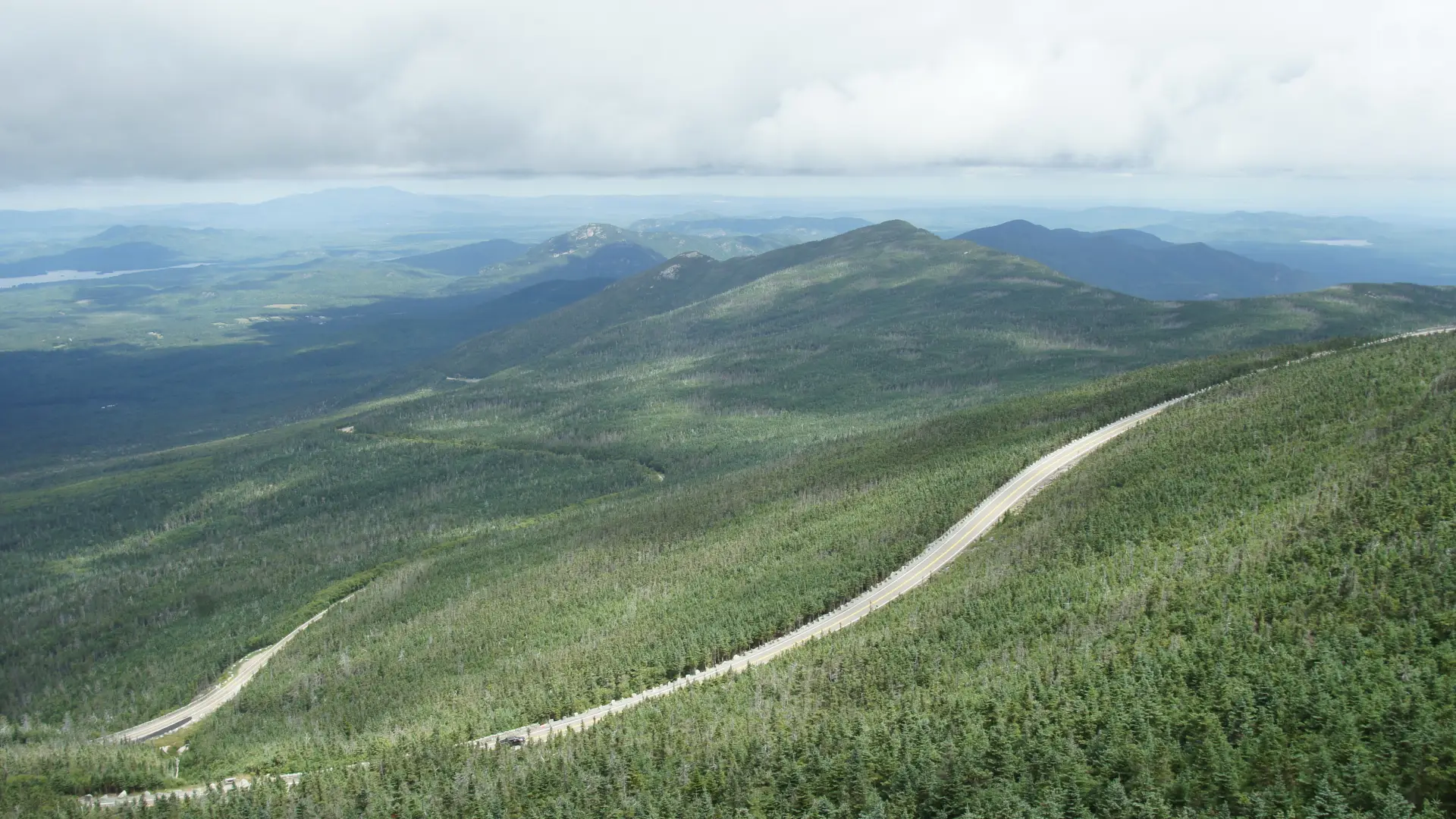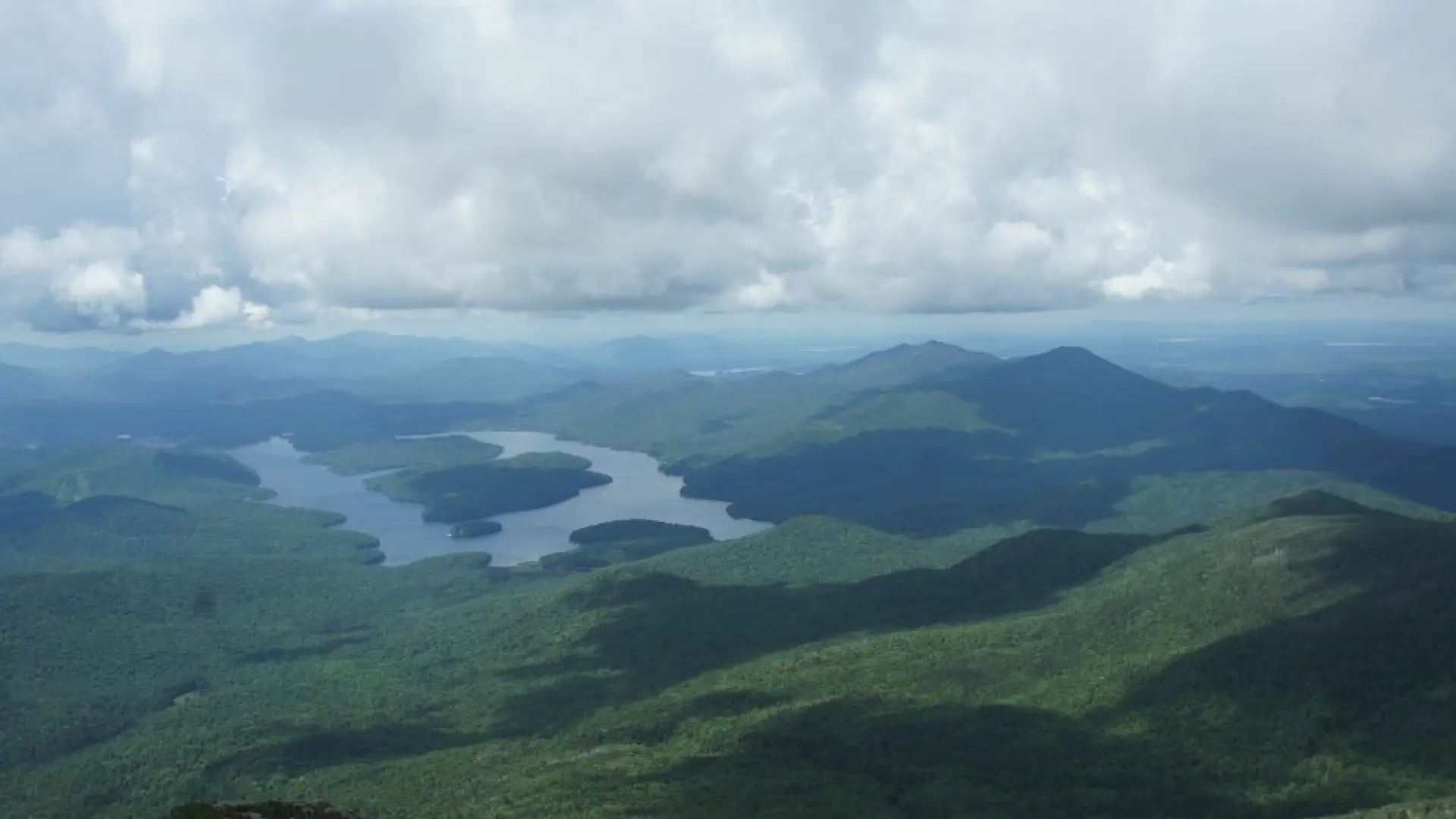
It was a breezy Saturday when Kendra and I led another trip up the toll road on Whiteface Mountain for The Wild Center. We met our participants in Wilmington as usual, and quickly began seeing birds. Birds were, like always, a focus of the trip.
While waiting for everyone to arrive, an eastern kingbird perched up in a bare tree. Kingbirds migrate south on the early side, and this bird was using the area as a stopover before moving on. Kingbirds also migrate during the day – most migrant songbirds migrate at night. But no sooner was I pointing it out, that the kingbird flew – much too quickly for the others to get much of a view.

As we were getting into our cars, a pair of raptors caught my eye – they were already riding the growing thermals and breezes of the day. The larger of the two was a broad-winged hawk – a common forest breeder here in the park. It was joined by a much smaller American kestrel – our smallest species of falcon and a bird of open country not common in the wooded areas of the Adirondacks. There were also a few turkey vultures flying to the south. It was clearly going to be a good day to find large soaring birds. As if to confirm that sentiment, an osprey cruised by as we were starting to drive up the hill. It had likely been checking out the nearby AuSable River for fish.
We stopped at the pull-offs along the way up Whiteface as we normally do when leading these trips, but found the song-birding to be slow. There is little or no bird song by mid-late August, and the breezy day seemed to have the birds hunkered down and quiet. We did find white-throated sparrows, and black-throated green and black-throated blue warblers. At one point a second broad-winged hawk came racing overhead with the wind in its tail feathers. It was practically a streak in the sky and then it was gone.
Once we climbed above 3300 feet which is about the lower elevation limit for Bicknell's thrush, we continued stopping, looking and listening specifically for them. But we did not hear a single call or see any thrushes. Windy August days are hardly the best days to look for them. Bicknell's are still there – and they will resume song briefly in September – but then they will be quiet again and head south to winter in the Greater Antilles.

At the Lake Placid curve we did find a group of winter wrens which were chattering and flipping here and there in the thick undergrowth. We also started looking at wildflowers since the birding was a tad slow. Whiteface is a great place to look at wildflowers – both along the road and at the summit. Many species such as bladder campion, closed gentian, and pearly everlasting can be found in a variety of habitats. Other species, however, are only found in alpine systems, and many of these have more common relatives in lowland habitats. For example, as we hiked the trail from the castle to the summit, we found alpine goldenrod, alpine cinquefoil, and alpine bilberry (a relative of blueberry).
While continuing to botanize at the peak and enjoying the views as the shadows of the clouds drifted across the landscape below us, a peregrine falcon raced across the sky just above the summit. Peregrines often breed on the cliffs of Wilmington Notch, and it was an exciting topper to our morning. We never found the falcon again, but took in a few last views before taking the elevator to our cars and starting back to Wilmington. I think The Candyman candy store was calling to many people in the party anyway. Mmm, maple fudge.